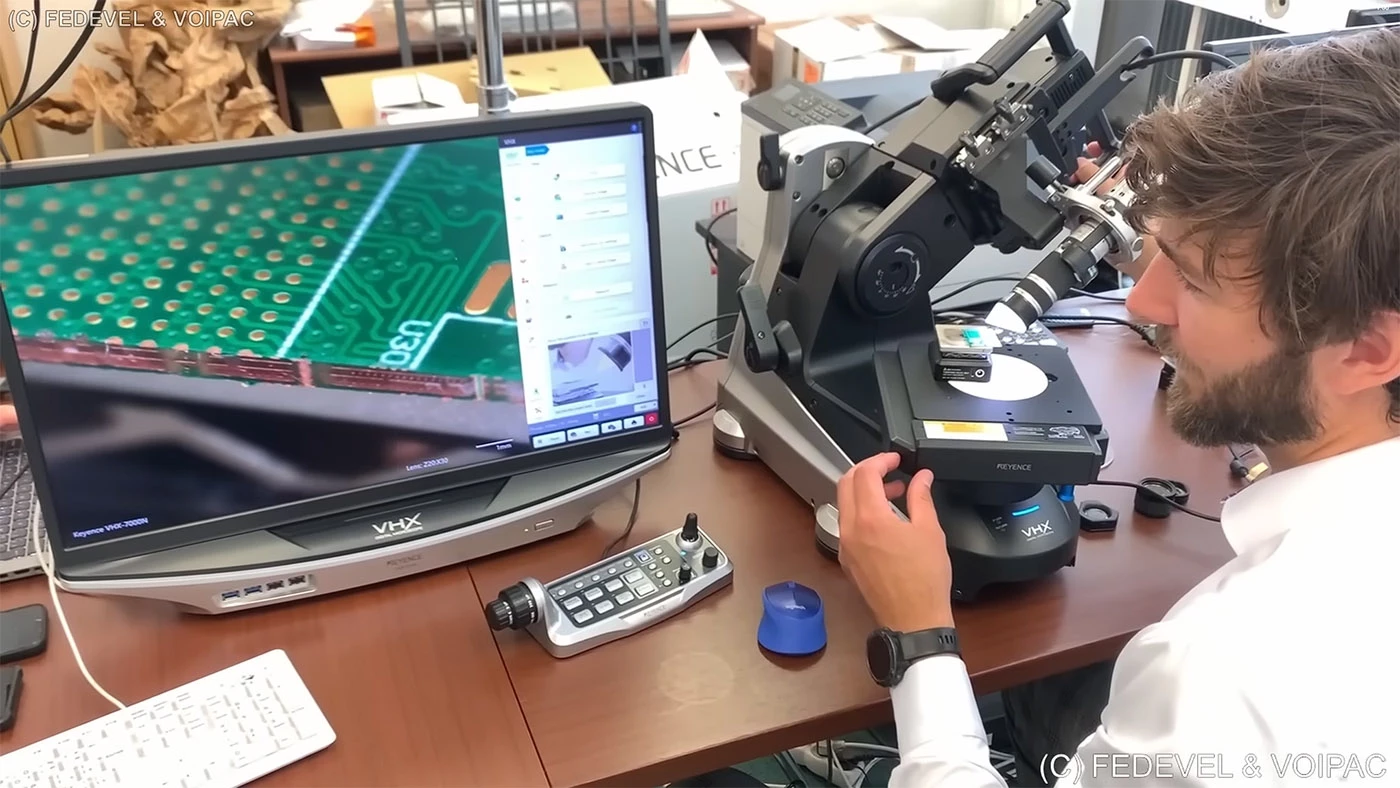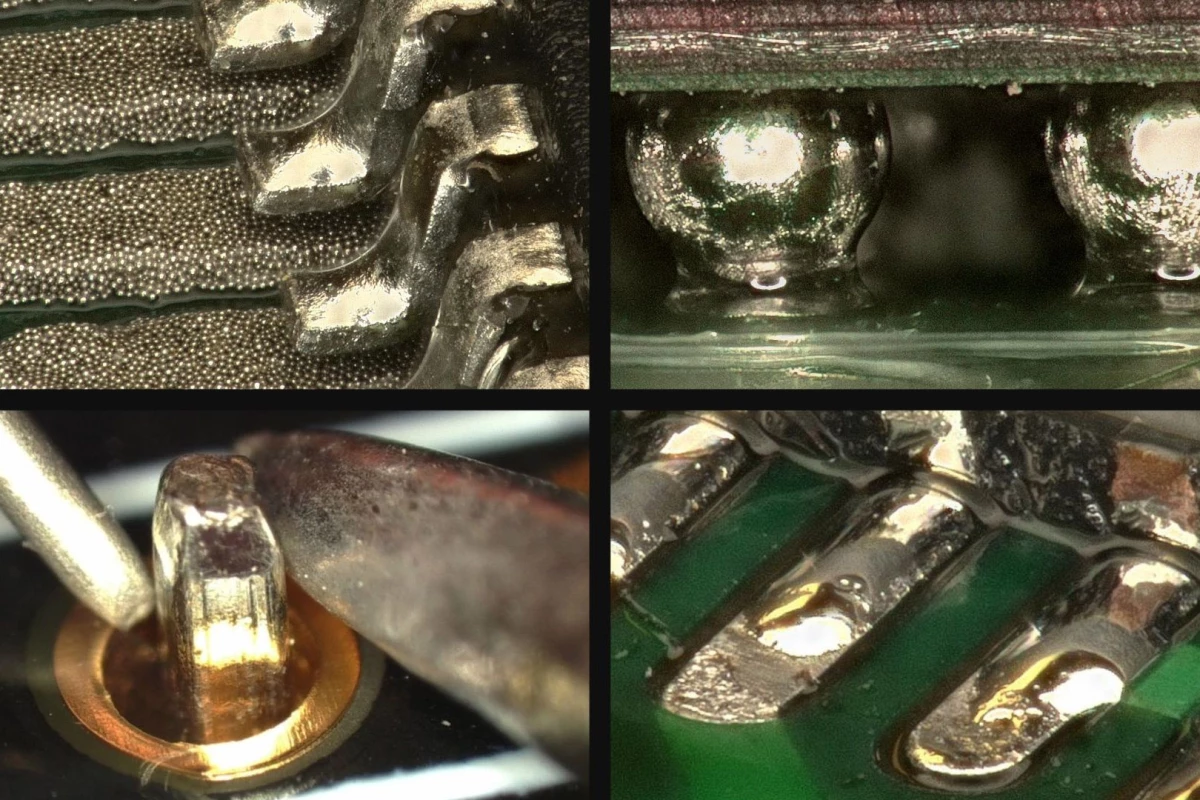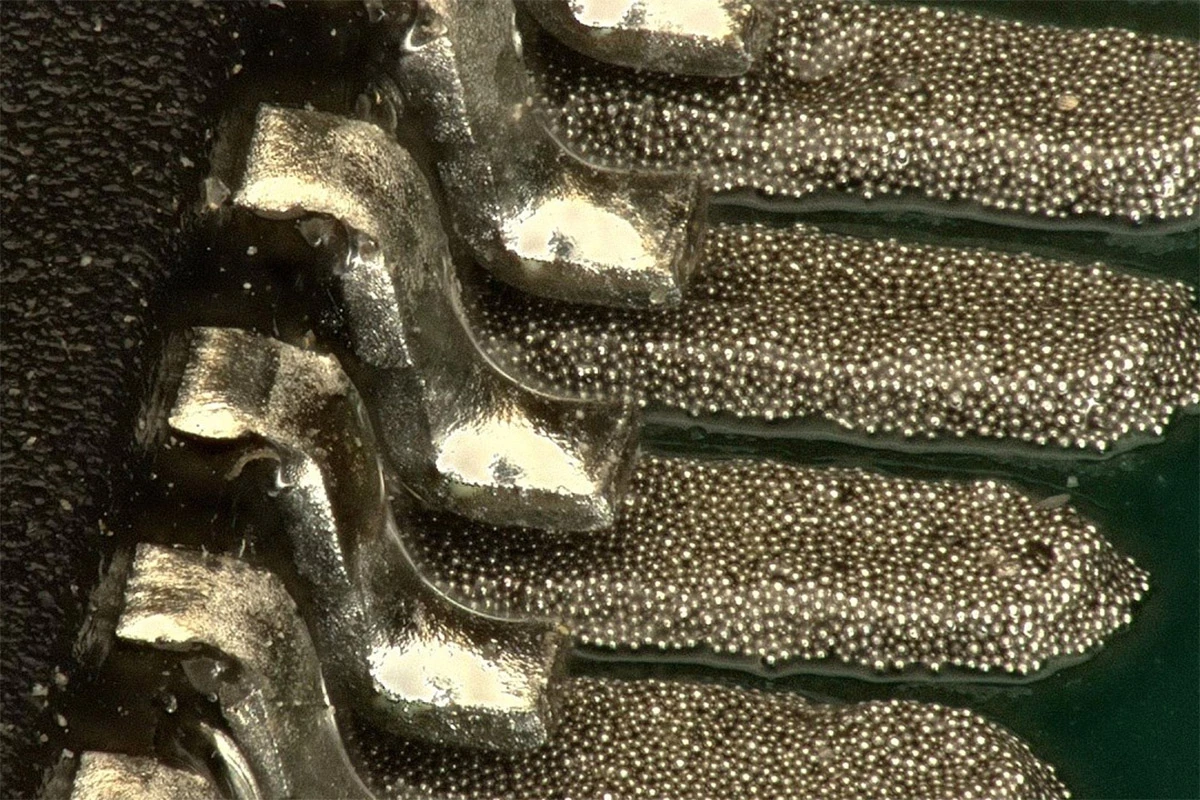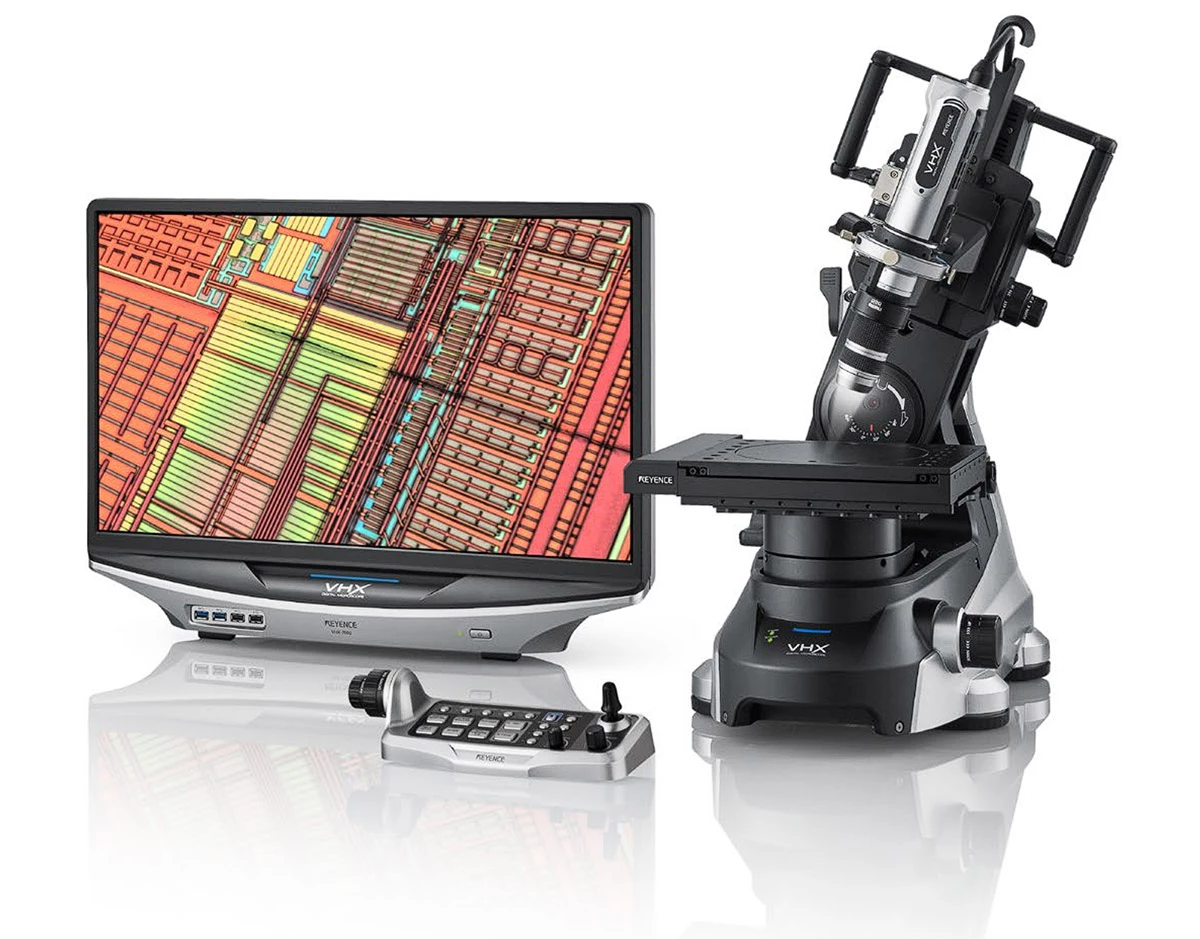We've got a feast for your eyes today, and it's some of the most mesmerizing footage we've seen through a microscope this year.
Robert Feranec, a hardware design engineer and educator who runs an excellent YouTube channel focusing on electronics, has a fascinating and satisfying video showing how soldering works up-close – real close.
You can see different kinds of soldering in greater detail than ever before, including Ball Grid Arrays on circuit boards, chips, and even leaded soldering.
It's a fun watch, even if you've never picked up a soldering iron before. Heck, it's especially intriguing if you know your way around soldering, and have wondered what these bonds might look like.
Feranec even shows you what happens when you use too much or too little solder on PCBs – so you can understand what your handiwork is like and what might cause issues with your DIY projects.
How did they capture that footage?
This video was shot using a high-end Japanese microscope, the Keyence VHX-7000N. When launched in 2022, the company said it was the "world's first 4K ultra-high accuracy microscope." It's capable of 6,000x magnification, and can generate 3D views of specific sections for measurements down to micrometers.
With an onboard 1-TB hard drive, 20 times greater depth-of-field than conventional microscopes, and HDR support for accuracy and contrast in its images, this microscope can capture truly stunning footage. One of these price-on-request bad boys will set you back by at least US$30,000 – and that's not counting the top-of-the-line lenses.

For those who may be unaware, soldering is the process of joining different types of metals, and is used in making electronics, jewelry, musical instruments, and even plumbing. It involves the use of a filler metal called solder, which is typically an alloy of tin and lead, or a non-toxic lead-free alternative. You essentially heat solder, drop it in between two metal points that need to be joined together, and then let it cool to form a bond.
For soldering items by hand, a soldering iron – which is usually designed like a pen with a pointed iron tip – is electrically powered to heat up to at least the melting point of the solder or filler metal. For common eutectic solder that contains lead, that's 360 °F (182 °C).
When the iron is warm enough, the solder (usually available in the form of a spooled wire) is fed to the contact points of the metal you want to join – say, a processor on a printed circuit board. Once you've heated the solder at the point between the metals on either component, you'll notice it turn to liquid and then cool to form a joint. In the case of electronic components, this provides both a mechanical and electrical bond between the two.
Soldering is believed to have originated early on in the development of metal-working processes as far back as 3,000 BC, as is evidenced by hard-soldered Sumerian swords from that era.
Fun fact: solder is pronounced differently in the UK and North America ('sole-der' and 'sodder' respectively).
You can typically buy a decent soldering kit for DIY projects for as little as $12. But if you want some serious firepower, look no further than the Jiizer 01X. It feeds soldering wire and heats it as well, so you can work with one hand and enjoy far greater control.

You can switch between three needle tubes of different sizes for various kinds of soldering tasks, swap in cutting tools to slice through rubber and leather, or use the built-in fan to blow hot air and work with heat-shrink tubing. If its Kickstarter campaign goes according to plan, this could be yours for $60, with additional accessories taking the kit up to $136.
If you enjoyed the soldering video above, you'll also want to check out this other breathtaking clip of a microscope zooming seemingly endlessly into the details of an iPhone processor. Spoiler: it's fake – but still worth a look.







